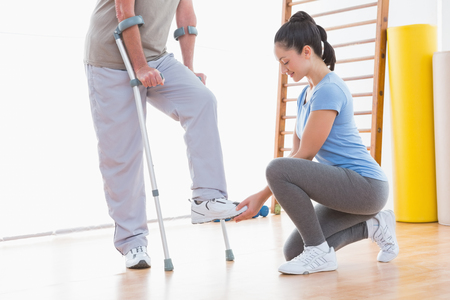Understanding Brain Injuries in the Indian Context
Brain injuries are a significant health concern across India, affecting individuals and families from all walks of life. In the Indian context, common causes include road traffic accidents, falls at home or workplaces, and sometimes violence or sports injuries. The country’s rapidly expanding population and busy urban streets contribute to high rates of such incidents. Rural areas face their own set of challenges—limited access to safety measures, less awareness about head protection, and delays in seeking medical care often complicate recovery. Cultural beliefs sometimes lead families to first consult traditional healers before approaching medical professionals, which may delay essential physiotherapy interventions. Additionally, social stigma attached to neurological disabilities can discourage open discussions about brain injuries and their management. Understanding these unique cultural influences and local challenges is crucial for promoting awareness and improving compliance with physiotherapy among Indian communities.
Awareness Levels Among Indian Communities
India is a land of diverse cultures, languages, and beliefs, all of which influence how people understand health and healing. When it comes to brain injuries, there are many misconceptions and gaps in awareness that can affect timely intervention and recovery. Understanding the publics knowledge about brain injury and rehabilitation—especially physiotherapy—is essential for improving outcomes across different regions.
Common Misconceptions in Everyday Life
In daily conversations, it is not unusual to hear phrases like “He just needs some rest” or “Ayurvedic oil massage will fix it,” when someone suffers a head injury. Many families may not realise the importance of immediate medical attention or structured physiotherapy following brain injuries. In rural areas, people might depend on home remedies or local healers before considering hospital care. Even in cities, myths such as “physiotherapy is only for broken bones” are quite common.
Regional Differences in Awareness
The level of understanding about brain injury rehabilitation varies significantly from state to state. Factors such as education, local language resources, and proximity to healthcare facilities play a role. For instance, urban centres like Mumbai or Bengaluru may have better access to information and specialists compared to remote villages in Odisha or Rajasthan.
Table: Examples of Public Knowledge and Misconceptions by Region
| Region | Common Belief | Reality |
|---|---|---|
| North India (Punjab, Delhi) | “Rest at home is enough after a head injury.” | Immediate assessment and physiotherapy are crucial for recovery. |
| South India (Tamil Nadu, Kerala) | “Traditional massage helps more than hospital treatment.” | Professional physiotherapy targets specific neurological deficits. |
| Eastern India (West Bengal) | “Speech problems will resolve with time.” | Early speech therapy alongside physiotherapy improves outcomes. |
| Western India (Maharashtra) | “Physiotherapy is only for fractures.” | Neuro-physiotherapy is essential for regaining movement after brain injury. |
The Path Forward: Bridging the Gap Through Awareness Drives
To encourage better compliance with physiotherapy among brain injury survivors, spreading accurate knowledge is vital. Community health workers, local language campaigns, and involving family members in care discussions can help correct misconceptions. With gentle guidance and culturally relevant examples, Indian communities can move towards improved awareness and better rehabilitation results.

3. Role of Family Support and Community Engagement
In Indian society, the presence of a strong family network and active community participation plays a pivotal role in the recovery journey of brain injury patients. The traditional joint family system, which is still prevalent across many parts of India, provides a unique environment where multiple generations live together under one roof. This collective living arrangement allows for continuous emotional and physical support, ensuring that the patient is never alone in their rehabilitation process. Family members often share responsibilities such as accompanying the patient to physiotherapy sessions, reminding them to perform prescribed exercises at home, and providing encouragement during difficult times.
Neighbours and local community groups further enhance this support system. In many Indian neighbourhoods, there exists a natural culture of looking out for one another, with neighbours often stepping in to offer assistance or simply lend a listening ear. For brain injury patients, such interactions can break feelings of isolation and motivate them to stick with their physiotherapy routines. Community health workers, religious groups, and self-help organisations also play an increasingly important role by spreading awareness about brain injury rehabilitation and facilitating group exercise sessions or educational workshops in local languages.
This networked approach not only improves compliance with physiotherapy regimens but also creates a sense of belonging and shared responsibility. When families, neighbours, and community groups join hands, they foster an environment where patients feel supported at every step. This collective care model is deeply rooted in Indian culture and remains a powerful force in improving outcomes for those recovering from brain injuries.
Cultural Beliefs and Stigma Around Rehabilitation
In Indian communities, cultural beliefs and social stigma play a significant role in shaping how individuals and families respond to brain injury rehabilitation, especially physiotherapy. Traditional views about illness, healing, and disability often influence whether people seek professional help or rely on home remedies and religious rituals. For many, there is a strong belief in fate (karma) and spiritual healing, which can sometimes discourage timely medical intervention.
Myths and misconceptions about physiotherapy are still common. Some believe that physical disabilities after a brain injury are permanent or that improvement is not possible with exercises and therapy. Others may fear that participating in rehabilitation programs will label them as “weak” or “incapable” within their community, leading to social isolation or even discrimination. These factors can delay the start of physiotherapy or cause people to drop out before completing their treatment.
Common Cultural Barriers to Physiotherapy Compliance
| Barrier | Description | Possible Solutions |
|---|---|---|
| Belief in Fate or Karma | Thinking that health outcomes are predestined and cannot be changed by therapy. | Community education sessions highlighting success stories and the science behind physiotherapy. |
| Social Stigma | Fear of being judged or excluded for having a disability or seeking therapy. | Support groups and inclusive events to normalize rehabilitation processes. |
| Lack of Awareness | Poor understanding of what physiotherapy involves and its benefits. | Information leaflets in local languages; awareness drives in temples, mosques, and community centers. |
| Preference for Traditional Remedies | Choosing home treatments or spiritual interventions over medical care. | Collaborating with traditional healers to encourage referral to physiotherapists when needed. |
The Role of Family and Community Support
The involvement of family members is central to overcoming these barriers. When relatives understand the importance of physiotherapy, they can motivate patients to attend sessions regularly and practice exercises at home. Similarly, community leaders and local influencers—such as religious heads or village elders—can advocate for rehabilitation, reducing shame and promoting recovery as a shared goal.
Towards Greater Acceptance
Promoting awareness and addressing myths through culturally sensitive education helps break down the walls of stigma. When physiotherapists respect local customs while explaining the value of their work, it creates trust. This gentle approach can make it easier for Indian families to see rehabilitation not as a sign of weakness but as an act of resilience and hope for a better future after brain injury.
5. Barriers to Compliance in Physiotherapy
Despite increasing awareness about brain injury rehabilitation in Indian communities, compliance with physiotherapy remains a challenge due to several interconnected barriers. One of the most significant obstacles is accessibility. In many rural or semi-urban regions, physiotherapy centres are located far from people’s homes, making regular visits difficult for patients and their families. Public transportation is not always reliable or convenient, especially for individuals with mobility issues following a brain injury.
Affordability is another crucial factor influencing compliance. While some government hospitals offer subsidised physiotherapy services, private clinics can be expensive and out of reach for many families. Even when services are available at lower costs, indirect expenses like travel and time away from work can deter consistent attendance. For daily wage earners, missing a day’s work to attend therapy sessions can have a direct impact on household income.
Trust in healthcare professionals also plays an important role. In some communities, there may be a preference for traditional healers or home remedies over modern rehabilitation practices. This mindset can delay the initiation of physiotherapy after a brain injury or lead to incomplete adherence to prescribed regimens. Building trust requires culturally sensitive communication and community engagement from healthcare providers.
Social stigma associated with disability and neurological conditions may discourage patients and families from seeking help openly. Some fear being judged or misunderstood by neighbours or extended family members, which can result in missed appointments or reluctance to follow through with recommended exercises at home.
Overall, overcoming these practical and socio-economic obstacles requires collaborative efforts from healthcare professionals, policymakers, and local leaders. Solutions could include mobile physiotherapy units, financial support schemes, and awareness drives that address both the medical and social aspects of brain injury recovery in the Indian context.
6. Strategies for Promoting Compliance and Inclusion
Embracing Local Success Stories
One of the most powerful ways to inspire compliance with physiotherapy for brain injury in Indian communities is by sharing local success stories. When patients and families hear about people from their own towns or villages—perhaps even someone they know—who have overcome challenges through regular physiotherapy, it builds trust and motivation. Encouraging local community members who have experienced positive outcomes to share their journeys at health camps, village meetings, or on regional radio shows can make rehabilitation seem more attainable and relatable.
Communicating in Vernacular Languages
India’s linguistic diversity is immense. Physiotherapists and health educators can boost compliance by communicating in the patient’s mother tongue. Simple physiotherapy instructions, motivational talks, and educational materials provided in Hindi, Tamil, Bengali, Telugu, Marathi, or other regional languages bridge gaps in understanding. Using familiar phrases and culturally relevant metaphors also makes advice easier to remember and follow. Family members—often key caregivers—should be included in these conversations to reinforce home-based therapy routines.
Community-Driven Initiatives
Involving the wider community can lead to better support systems for those recovering from brain injuries. Local panchayats, women’s self-help groups, temple committees, and youth organizations can help spread awareness about the importance of physiotherapy. Community-driven support groups provide a safe space for families to share experiences, ask questions, and receive encouragement. Periodic health camps led by local physiotherapists not only raise awareness but also demonstrate practical exercises in a group setting—making therapy less intimidating.
Customizing Solutions for Rural and Urban Settings
The approach should respect the unique needs of both rural and urban communities. In rural areas where resources may be limited, leveraging traditional gathering spots like chaupals or anganwadis for sessions can encourage participation. In cities, collaborations with resident welfare associations or local clinics are effective ways to reach larger groups efficiently.
Empowering Through Education
Ultimately, empowering individuals and communities with knowledge about brain injury recovery is essential for lasting change. This means ongoing education—not just at the time of injury but throughout recovery—with clear explanations of why compliance matters. Interactive workshops using role-play or storytelling resonate well in Indian settings and can demystify physiotherapy practices.
By combining culturally sensitive communication, inclusive community involvement, and ongoing education tailored to India’s diverse regions, we can foster greater awareness and compliance in brain injury physiotherapy—helping every individual regain their potential with dignity and hope.

